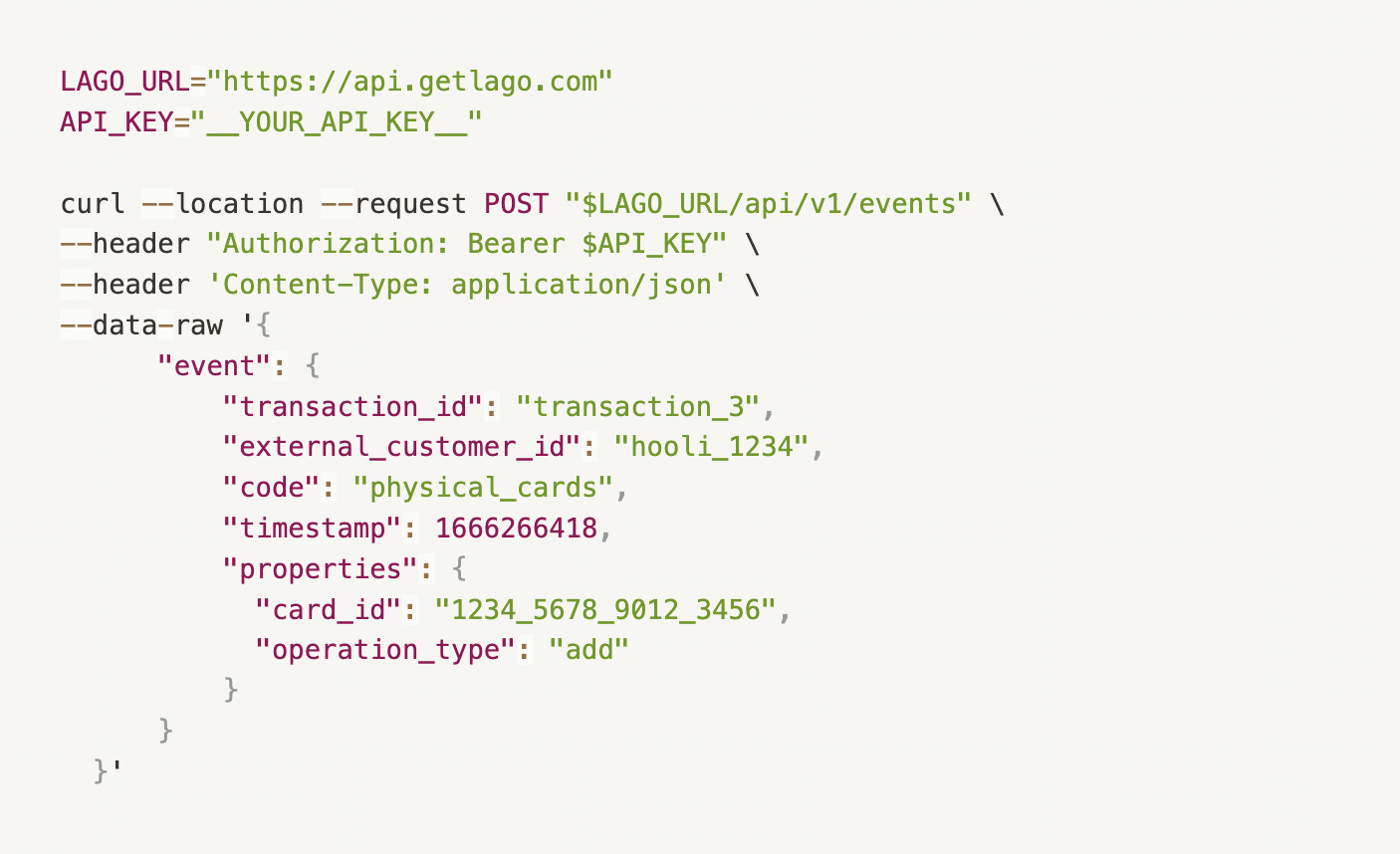5 essential billing features for BaaS companies

Banking as a service companies (aka BaaS) offer a wide range of pay-as-you-go features. Column and Swan, for example, have a full catalog of usage-based features, as we can see below.


Unfortunately, because of their complex pricing with many price items, these companies are forced either:
• To build their own billing engine; or
• To adapt their pricing to the rigid billing solutions currently available on the market.
At Lago, we’ve designed a billing API that makes it easy for BaaS to set up their billing system.
Usage-based by design
A BaaS requires a billing system that includes a metering system. Most of the solutions out there don’t meet this requirement. We see many companies struggling with Chargebee because they need to compute usage before sending it to the billing system. This means that they need to build another billing engine on top of a billing solution, which is not very efficient.

When you have thousands of customers and process millions of transactions, it’s a nightmare to build and maintain your own metering system. It ends up being a lose-lose situation: you have to build your billing engine and on top of this, you spend a lot of money on a third-party solution that only does a third of the job.
With Lago, we’ve decided to do the job for you, including metering, automatic usage aggregation and fully-fledged billing solution (i.e. invoicing, add-ons, coupons, prepaid credits, etc.). With our software, your tech team can stop worrying about the billing system and focus on product features that are important for your business.

With our metering and automatic aggregation service, BaaS can send event streams without having to build anything on their side.
#1 No limitation on usage recording
When you take a look at Chargebee’s documentation and FAQ, you quickly understand that it’s not made for usage-based billing.
“The maximum number of usages that can be recorded for the entire lifetime of a subscription is 5000.”
From Chargebee’s knowledge base
5,000 usage records for the lifetime of the subscription… That’s not even what a BaaS records in a day!
Lago is made for metering. We don’t have API rate limits for events and don’t put any constraints on usage recording. You can send raw and heavy usage records (i.e. logs or event streams), Lago will aggregate them for you.
#2 Real-time metering and aggregation
Our billing API ingests heavy sets of events and convert them into “units to be charged” at the end of the billing period. See the example below.


When you define a billable metric, Lago automatically aggregates usage and calculates the corresponding charge.

Usage can be metered (i.e. reset to 0 at the end of the period) or persistent (i.e. carried over several billing periods, until you remove it).
#3 Event-based architecture and idempotency
We ensure the uniqueness of each event with a transaction_id that is used as an idempotency key. If a second event with the same transaction_id is recorded, it will not be taken into account.
#4 Off-the-shelf percentage charge model
All BaaS charge fees as a percentage of transactions (e.g. FX transactions, bank transfers, ATM withdrawals, etc.). Chargebee and Stripe don’t offer a percentage charge model, so you can’t define the rate, you need to calculate the fees on your side.
Lago’s percentage charge model allows you to send the amount of each transaction and calculates the fees for you. It also offers some advanced features, including:
• Basic percentage (e.g. 2% on transactions);
• Percentage and fixed amount (e.g. 2% + 0.20 per transaction);
• Percentage and free transactions (e.g. 2%, the first three transactions are free); and
• Percentage and exempted amount (e.g. 2%, the first $500 are free).

#5 Persistent units for cards
In addition to metered usage, we offer a powerful way to keep persistent items in memory. We call “persistent” all units that are carried over the next billing period (i.e. not reset to 0).
Let’s take the example of a physical card issued by a BaaS. This card will be billed monthly until it’s deactivated. To prevent sending a usage record for this card every month, we keep it in the system until you remove it. Charges related to persistent metrics are prorated based on the number of days of activity.


If you’re looking for a billing solution for your BaaS platform, feel free to reach out to us, we’ll be happy to help.
Two hosting options, same benefits
Whether you choose the cloud version or decide to host the solution yourself, you will benefit from our powerful API and user-friendly interface.

Open source
The optimal solution for small projects.


Premium
The optimal solution for teams who want control and flexibility on cloud or self-hosted version.

